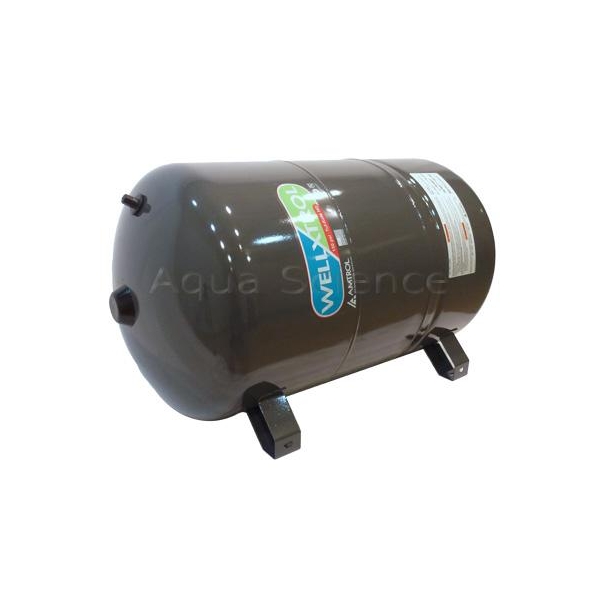Have you ever wondered what keeps your water flowing smoothly from your well? The answer lies hidden inside a device many overlook—the pressure tank for well water. This crucial component controls water pressure, protects your pump, and ensures steady water delivery. Choosing the wrong tank can lead to costly repairs or system failures. Ready to discover how to select the perfect pressure tank that matches your water needs and system? Let’s dive in.
Pressure Tank Installation Mistakes to Avoid for Well Water Systems
| Common Mistake | Why it Matters |
| Using the wrong tank size | Causes pump short-cycling |
| Installing tank without a proper base | Leads to tank damage and leaks |
| Ignoring pre-charge air pressure | Results in inefficient water flow |
| Poor tank placement near the well | Causes pressure loss and corrosion |
How to Choose the Perfect Pressure Tank Size for Your Well
Sizing your pressure tank for well water correctly is key to a reliable system. Ask yourself: How many people use water daily? What is your average water consumption? A small tank may cause your pump to cycle too often, wearing it out prematurely. On the other hand, an oversized tank wastes space and money. For most households, a 20-40 gallon tank fits perfectly, but larger homes or commercial sites might require tanks up to 80 gallons or more. The goal? Balance capacity with daily water use and pump specs.
Pointers to remember:
- Match tank capacity to household water demand.
- Consult your pump’s flow rate to avoid short cycling.
- Bladder vs. Diaphragm Tanks: What’s Best for You?
Pressure tanks come mainly in two types: bladder and diaphragm. Both contain a flexible membrane separating water and air, but their design differences impact performance and maintenance.
Bladder tanks have a rubber bladder that expands and contracts, making them excellent at maintaining steady pressure. They are easier to service since the bladder can be replaced if damaged. Diaphragm tanks use a flexible diaphragm instead, offering fewer moving parts but requiring more careful pressure management.
Which type suits you best? If you want low maintenance and long life, a bladder tank is often the premium choice. If you prefer simplicity and less risk of bladder failure, go with a diaphragm tank.
Pointers to consider:
- Bladder tanks reduce waterlogging risks.
- Diaphragm tanks are more resistant to sediment buildup.
- Material Matters: Steel, Fiberglass, or Composite Tanks
The material of your pressure tank for well water determines its durability and lifespan. Steel tanks are the traditional choice, known for strength and affordability. However, they are prone to rust over time if not properly coated or maintained. Fiberglass tanks resist corrosion and are lightweight, ideal for harsh water conditions. Composite tanks combine durability and corrosion resistance with a modern, maintenance-free design.
Selecting the right material depends on your water quality and environmental conditions. For example, if your well water has high mineral content, fiberglass or composite tanks are better to prevent rust and leaks.
Why Your Pressure Tank Choice Impacts the Entire Well System
Choosing the correct water well pressure tank does more than just supply water. It protects your pump from damage caused by rapid cycling and maintains constant pressure throughout your home or business. A quality tank reduces energy costs and lowers maintenance requirements.
Ask yourself: Is your current system efficient? Does your pump frequently turn on and off? If yes, it’s time to consider upgrading your pressure tank. The right tank will save you money in the long run and guarantee steady water flow.
Maintenance and Longevity: What to Keep in Mind
A well-chosen pressure tank performs well only if maintained properly. Check your tank’s air charge regularly—this ensures the air and water balance inside stays optimal. For steel tanks, inspect for rust or corrosion signs. Bladder and diaphragm tanks need periodic checks for membrane integrity.
By investing in a durable tank and regular maintenance, you extend your system’s life and avoid unexpected breakdowns.
Make the Smart Choice with Expert Guidance
Selecting the ideal pressure tank for well water may seem complex, but with expert advice and premium products, you can confidently optimize your water system. Remember, the right size, type, and material not only improve performance but also protect your investment. Reach out to experienced water system professionals who combine advanced designs with top-tier support for customized solutions tailored to your needs.
Final Thought: Your Well Deserves the Best
Your water well system powers your home or business daily. Don’t let a poorly chosen pressure tank put it at risk. Choose wisely, install properly, and maintain consistently. This simple step ensures clean, steady water flow for years to come.



